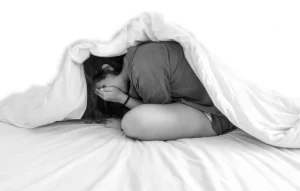Seasonal depression, also known as Seasonal Affective Disorder (SAD), is a type of depression that occurs at specific times of the year, typically during fall and winter. It is a recognized mental health condition that affects millions of people worldwide, impacting mood, energy levels, and daily activities. Understanding the symptoms, causes, and available treatments for seasonal depression is crucial for those affected and their loved ones.
What is Seasonal Depression?
Seasonal Affective Disorder (SAD) is a subtype of major depressive disorder (MDD) that follows a seasonal pattern. While most cases occur in the colder months, some individuals experience summer-pattern SAD, though it is less common. The exact cause of SAD is still being researched, but it is believed to be linked to changes in sunlight exposure, which affects melatonin and serotonin levels in the brain.
Common Symptoms of Seasonal Depression
The symptoms of SAD are similar to those of major depression but are cyclical, appearing and disappearing with the seasons.
1. Persistent Sadness and Low Mood
Individuals with SAD often experience prolonged periods of sadness, hopelessness, and emotional numbness, making it difficult to enjoy daily activities.
2. Loss of Interest in Activities
A common sign of seasonal depression is a lack of interest in previously enjoyed activities, leading to social withdrawal and isolation.
3. Fatigue and Low Energy
Many people with SAD report feeling persistently tired and lacking energy, even after adequate rest.
4. Changes in Sleep Patterns
Sleep disturbances such as oversleeping (hypersomnia) or insomnia are prevalent among those suffering from seasonal depression.
5. Appetite and Weight Changes
An increase in cravings for carbohydrates and weight gain is commonly associated with winter-pattern SAD, while decreased appetite is more common in summer-pattern SAD.
6. Difficulty Concentrating
Struggling to focus, make decisions, or remember details is another key symptom of SAD.
7. Feelings of Guilt and Hopelessness
SAD can lead to excessive guilt, self-blame, and feelings of worthlessness.
8. Increased Irritability
Some individuals with SAD become more irritable, easily frustrated, and prone to mood swings.
9. Physical Symptoms
Headaches, body aches, and a feeling of sluggishness are commonly reported by those suffering from seasonal depression.
10. Suicidal Thoughts
In severe cases, individuals may experience thoughts of self-harm or suicide. Seeking immediate professional help is crucial.
Causes and Risk Factors of Seasonal Depression
While the exact cause of SAD is not fully understood, several factors contribute to its onset:
- Reduced Sunlight Exposure: Less sunlight can disrupt the body’s internal clock and lead to hormonal imbalances.
- Serotonin Deficiency: Lower serotonin levels can contribute to depression and mood instability.
- Melatonin Disruption: Changes in daylight affect melatonin production, which regulates sleep and mood.
- Genetic Factors: A family history of SAD or other forms of depression increases the risk.
- Geographical Location: People living in regions with long winters and limited sunlight exposure are more prone to SAD.
Effective Treatments for Seasonal Depression
Fortunately, there are several effective treatments available for SAD. A combination of lifestyle changes, therapy, and medication can help manage symptoms.
1. Light Therapy (Phototherapy)
Light therapy involves exposure to a bright light box that mimics natural sunlight. Daily sessions of 20-30 minutes can help regulate mood and improve energy levels.
2. Cognitive Behavioral Therapy (CBT)
CBT is an evidence-based therapy that helps individuals identify and change negative thought patterns and behaviors associated with seasonal depression.
3. Antidepressant Medications
Selective serotonin reuptake inhibitors (SSRIs) and other antidepressants are commonly prescribed for severe cases of SAD. They help balance serotonin levels and improve mood.
4. Vitamin D Supplements
Since vitamin D deficiency is linked to SAD, supplementation may help improve symptoms in those with low levels.
5. Exercise and Physical Activity
Regular physical activity, especially outdoor exercise, can help combat symptoms of seasonal depression by boosting endorphin levels.
6. Healthy Diet
A well-balanced diet rich in essential nutrients can support mental well-being. Reducing sugar and processed food intake can also help stabilize mood.
7. Establishing a Routine
Maintaining a consistent sleep schedule, daily activities, and exposure to sunlight can help regulate mood and energy levels.
8. Social Support
Engaging with family, friends, or support groups can reduce feelings of isolation and improve overall well-being.








